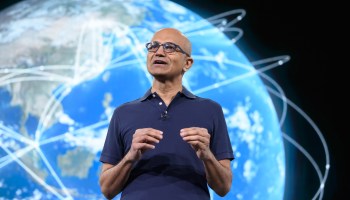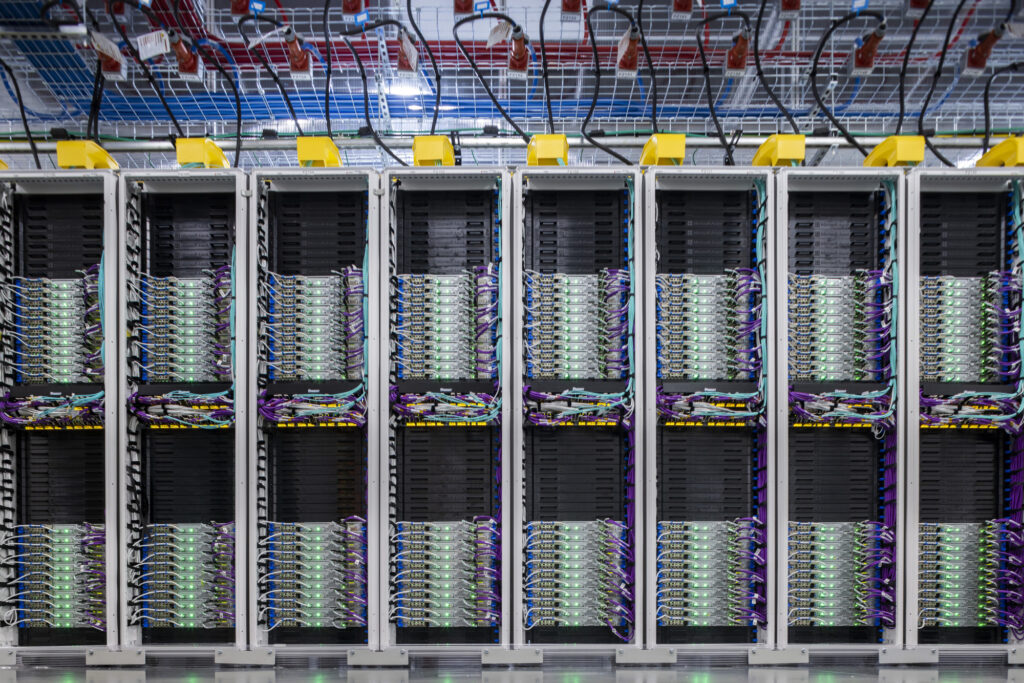
Analysts, investors, and the media are suddenly focused intensely on capital expenditures by tech giants including Microsoft, Meta, Google, and others to size up the industry’s bet on the cloud and artificial intelligence.
Charles Fitzgerald is wondering where everyone has been.
The Seattle angel investor and tech veteran has made a tradition of tracking capital expenditures on his blog, Platformonomics, to “separate the clouds from the clowns,” as he puts it. He has watched with amusement as the rest of the world, seemingly, has caught on to the importance of CapEx in tech over the past week.
It makes sense, though, because the numbers are starting to get big.
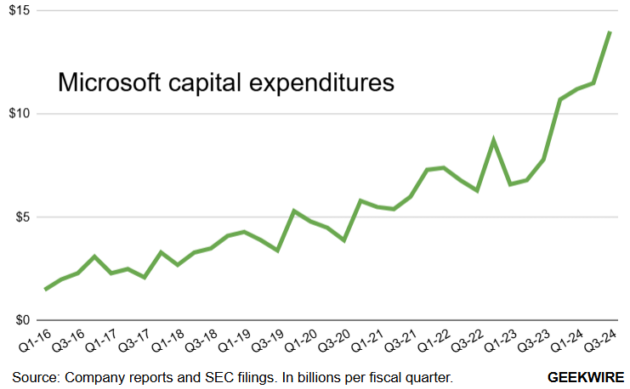
- Microsoft’s capital expenditures rose 79% to a record $14 billion in the March quarter. Amy Hood, Microsoft’s chief financial officer, told analysts that CapEx will keep growing in the 2025 fiscal year, which starts in July.
- Google parent Alphabet reported capital expenditures of $12 billion, up 90%, “driven overwhelmingly by investment in our technical infrastructure,” CFO Ruth Porat told analysts. The increase “reflects our confidence in the opportunities offered by AI across our business,” she said.
- Facebook parent Meta reported $6.7 billion in quarterly capital expenditures, down from more than $7 billion a year earlier, but raised its CapEx guidance for the year to a range of $35-40 billion, up from $30-37 billion before.
CapEx for cloud and AI includes upgrading and building new data centers; developing and procuring GPUs and specialized chips to train and run AI foundation models; laying transoceanic cables; and other infrastructure to expand what amounts to a “globe-spanning mega-computer,” as Fitzgerald puts it.
“There’s a huge build-out going on,” he said.
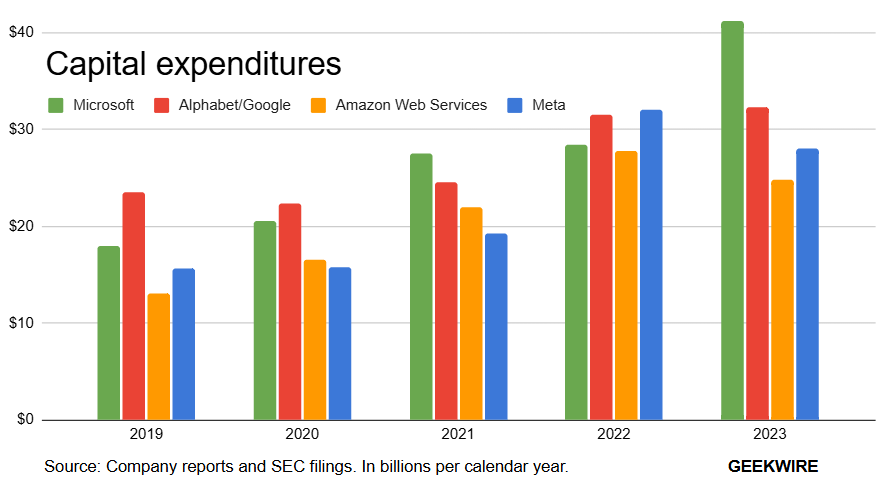
The big question, long-term, is whether demand for AI services will be worth the investment for each company. For example, Meta’s shares plunged on its capital expenditure forecast, indicating that investors aren’t as confident in its ability to turn its AI investments into meaningful revenue over the long term.
On the Microsoft call last week, Hood emphasized the company’s focus on controlling costs to avoid capital expenditures cutting significantly into its profit margins, which analysts seemed willing to accept. Microsoft’s tight partnership with ChatGPT maker OpenAI is a key driver of AI demand and revenue for the company.
“We continue to bring capacity online as we scale our AI investments with growing demand,” Hood told analysts. “Currently, near-term AI demand is a bit higher than our available capacity.”
Some AI startups, meanwhile, are facing the daunting challenge of staying competitive and finding a niche in the face of these outsized investments by the major tech platforms.
So why has Fitzgerald been paying attention to these numbers for so long? In short, when it comes to assessing the cloud platforms, capital expenditures serve as table stakes and a barometer. “It’s a prerequisite to play in this space, but it’s also confirmation that you’re playing,” he said.
This explains why Fitzgerald skewered IBM last week for a 21% decrease in CapEx. But for other tech giants, the outsized investments in cloud and AI infrastructure are redefining their businesses, taking them well beyond the software and online services that have fueled much of their growth.
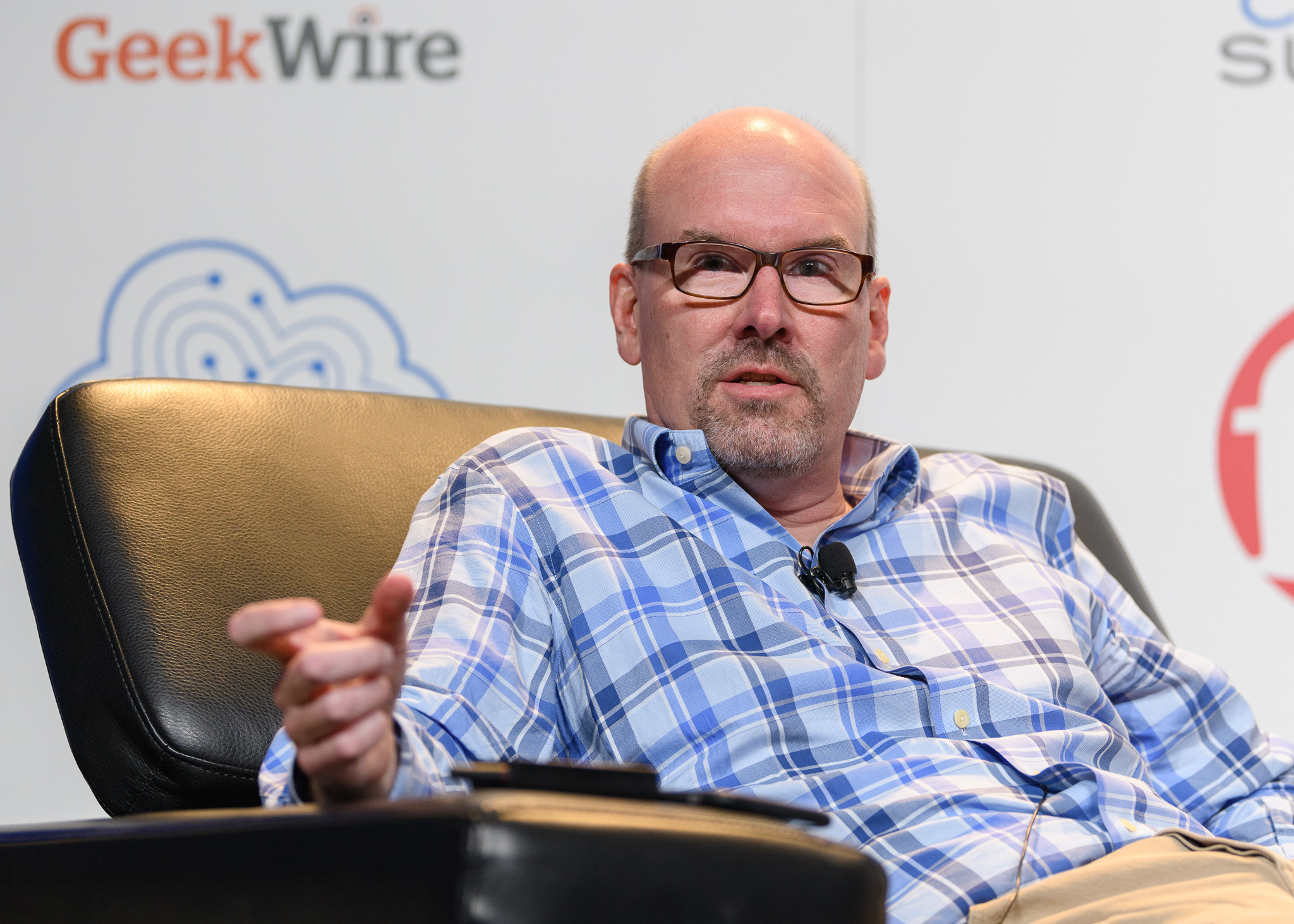
For example, Microsoft’s capital expenditures went from 5% of revenue a decade ago to 15% in its 2023 fiscal year. In the most recent quarter, it surpassed 22%, with $14 billion in capital expenditures and $61.9 billion in revenue.
“They’ve become hardware companies,” Fitzgerald said.
What about Amazon? It’s a different beast, in part because its overall capital expenditures include not only its Amazon Web Services data centers but also fulfillment centers and other e-commerce facilities.
However, a line in the company’s annual 10K filing with the SEC breaks out the “total net additions to property and equipment” for AWS, which declined from $27.8 billion in 2022 to $24.8 billion in 2023, in contrast with the capital spending increases by Microsoft and Google, Amazon’s biggest rivals in the cloud.
Amazon on Tuesday announced general availability of Amazon Q, its AI assistant for software development, cloud optimization, and business intelligence.
Amazon has spent much of the past year seeking to convince Wall Street and the tech world that it’s positioning itself to succeed in artificial intelligence. Given that, it’s not a stretch to imagine Amazon offering up some juicy new details about its capital expenditures when it reports earnings Tuesday afternoon.
Fitzgerald will be paying close attention — along with everyone else.


